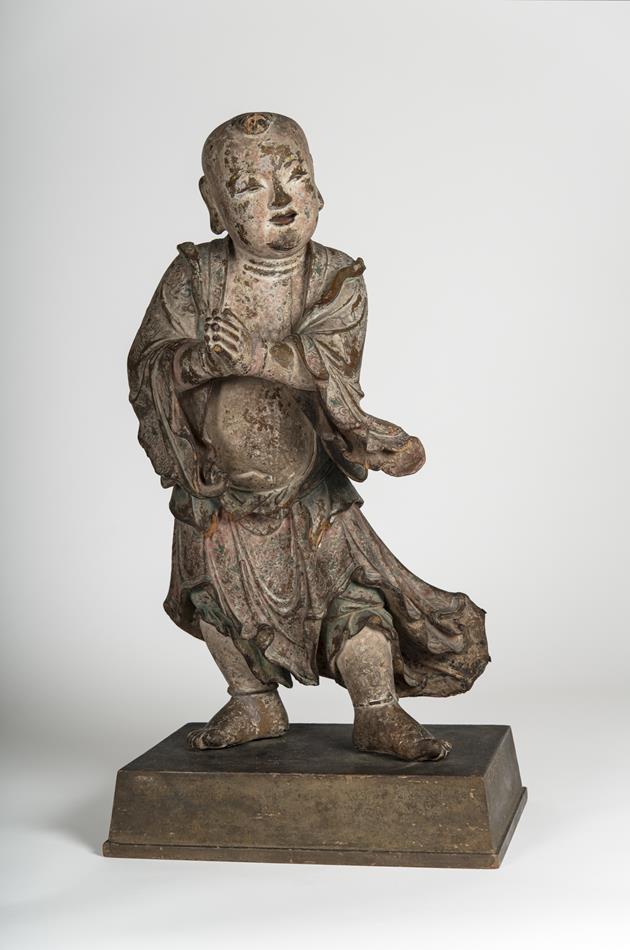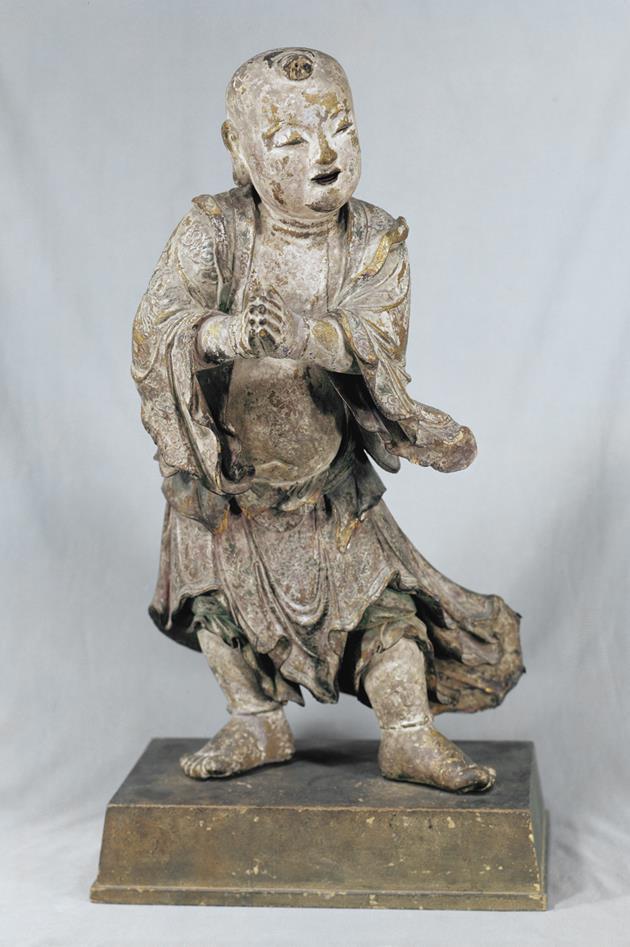Attendant to Guanyin
16th - 17th century
This youthful attendant of Guanyin is fondly known as the “Golden Boy” because he was originally covered with gold leaf. At a later time, he was lacquered and embellished with raised decoration resembling embroidery.
In East Asia and the Himalayas, priests often deposited sacred materials like relic grains, rosaries, incense, textile patches, and sutra texts inside the bodies of Buddhist sculptures and then sealed them up during consecration ceremonies. This boy has a compartment at the back of his torso containing a small bronze mirror, sheets of paper with Tibetan characters, and textiles dyed in various colors, some representing body organs.
Learn more about this artwork by pasting this link into your browser:
https://www1.seattleartmuseum.org/tours/media/27
Wood, polychrome, gilt
Overall: 29 1/2 × 16 × 11 in. (74.9 × 40.6 × 27.9 cm)
Figure: 25 1/2 × 13 1/2 × 9 1/2 in. (64.8 × 34.3 × 24.1 cm)
Eugene Fuller Memorial Collection
48.53
Provenance: possibly Ludington Collection; Jan A. Kleijkamp; Richard Fuller, Seattle, Washington, February 1948; by gift to Seattle Art Museum, Seattle, Washington, 1948
Photo: iocolor, LLP










